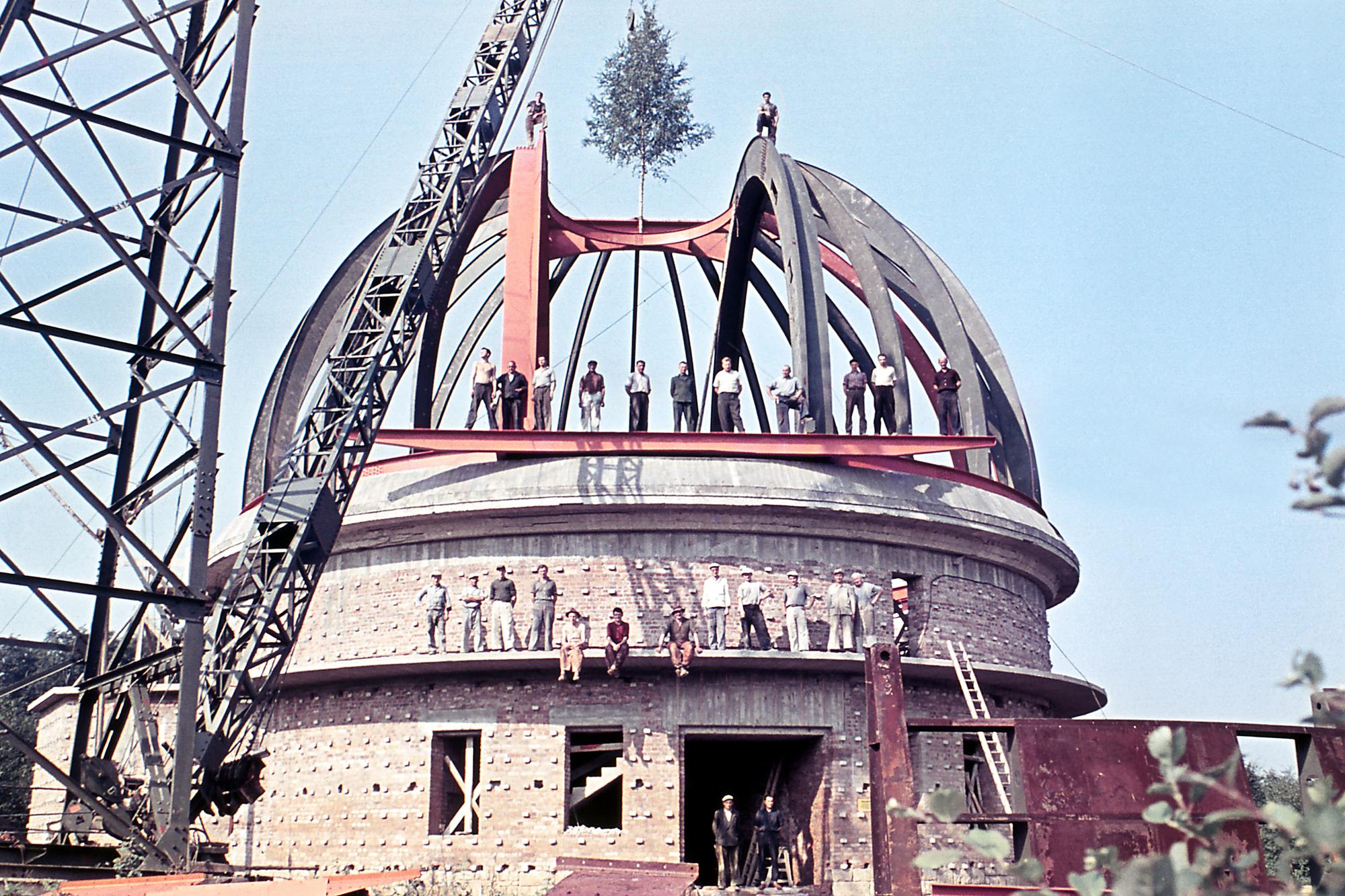The History of the Thuringian State Observatory
Authors: Professor Dr. Helmut Meusinger, Ingrid Schutzmann
Background
The beginning of the 20th century saw a leap in the size and performance of new astronomical telescopes. In 1908, a 1.5-meter reflector telescope was put into operation on Mount Wilson, California. It was followed by the 2.5-meter Hooker telescope at Mount Wilson Observatory in 1917, which remained the world's largest telescope for around a quarter of a century.
In Germany, the company Carl Zeiss Jena buildt a 1.2-metre reflector telescope for the Babelsberg Observatory in 1924, making it the best-equipped observatory in Europe. Babelsberg Observatory in Potsdam had emerged from the traditional Berlin Observatory. During these years, several German astronomers, including Hans Kienle (Director of Göttingen Observatory since 1925), considered building a 2-meter telescope. The global economic crisis, the Nazi takeover and the Second World War put an end to this development.
The restart of astronomical research after the war was very difficult. The renowned Babelsberg Observatory had lost valuable observation instruments, including the 1.2-meter telescope, as a direct result of the war and its consequences. Hans Kienle (1895-1975) in particular was one of the astronomers who campaigned for a new start. Kienle had been director of the Potsdam Astrophysical Observatory since 1939 and was one of the most important personalities in the astronomical research landscape of post-war Germany. (Post-war Germany was divided into four occupation zones.) In addition to theoretical problems in astrophysics, Kienle's scientific interest was always focused on improving astronomical observation techniques.
In March 1947, a few days after the dismantling of the Carl Zeiss factory in Jena and against the background of the rebuilding of the astronomy department at Carl Zeiss Jena, its director, Georg Hartwig, traveled to Potsdam for exploratory talks with professors from the astrophysical and geodetic institutes there (Hans Kienle, Walter Grotrian, Johann Wempe and Paul Guthnick). He wanted to coordinate mutual interests. Kienle mentioned the plan for a large optical telescope, which was to be set up in a more favorable climatic location than Berlin.
The Development of the 2-Meter-Telescope
November 1947
The actual history of the Tautenburg 2-meter telescope began with a meeting between Hans Kienle and senior employees of the Carl Zeiss astronomy department in Jena on November 25 and 26, 1947. They talked about the anticipated need for astronomical instruments. Kienle's main request was for a large reflector telescope with Newtonian, Cassegrain and Coudé focus. With a primary mirror of 2 meters aperture, this was a large telescope at the time. There were only two larger telescopes in operation worldwide. As a member of the German Academy of Sciences (DAW) in Berlin, Kienle held out the prospect of a commission to Carl Zeiss Jena from the DAW.
At this point, Kienle was thinking about the 2-meter telescope in combination with the Schmidt telescope, which Carl Zeiss Jena was manufacturing for the Hamburg-Bergedorf Observatory. As with the Mount Palomar Observatory in California, where the 5-meter Hale telescope and a 1.26-meter Schmidt telescope were nearing completion, synergy effects were expected. The Schmidt telescope was supposed to observe large areas of the sky which then could be studied in detail with the larger telescope.
January 1948
The management of Carl Zeiss Jena gives Kienle an official commitment. The “2-meter telescope” project picks up speed. In the astronomy department at Carl Zeiss Jena, chief designer Alfred Jensch is asked to carry out a feasibility study.
June 1948
Currency reform in the three western occupation zones to combat hyperinflation and revive the ailing economy after the Second World War. Kienle receives information that the Hamburg Senate is no longer able to secure funding for the Schmidt telescope in Hamburg
April 1949
Since it is not certain any more, that Carl Zeiss Jena gets the contract for the optics of the Hamburg Schmidt telescope, Kienle now sees it as necessary to redesign the 2-meter mirror so that it can also be used to study large celestial fields. Carl Zeiss Jena is examining whether it is possible to combine the previous “classic” multi-mirror variant (with parabolic primary mirror) with the Schmidt variant (with spherical primary mirror) in a new type of telescope using only one primary mirror.
Kienle describes the planned telescope in detail in a memorandum for the German Academy of Sciences: It is to be a large telescope with a 2-meter mirror that can be used in various ways, in particular as a Schmidt telescope. In accordance with the resolutions of the Hamburg Directors' Conference, Kienle also considers plans for a radical reorganization of the research landscape. He proposes that the telescope should not be linked to a purely educational institute, but should be made available to all astronomers worldwide. The telescope should be managed by a board of trustees from all-over Germany (meaning all four occupation zones).
May 23, 1949
The Grundgesetz for the Federal Republic of Germany was proclaimed. On the next day, it became the provisional constitution of the three western occupation zones.
June 29, 1949
The DAW commissioned Carl Zeiss Jena to build the 2-meter telescope and establishes a “2-m Mirror Commission” headed by Kienle. Although Kienle accepted a position at the Landessternwarte Heidelberg in 1950, he remained committed to the “2-meter mirror” project and was confirmed as chairman of the commission by the German Academy of Sciences in 1953.
October 7, 1949
The Provisional People's Chamber proclaimed the constitution of the German Democratic Republic (GDR). For the next forty years, between 1949 and 1989/90, Germany is divided into two states: the democratic Federal Republic of Germany in the West and the communist dictatorship of the German Democratic Republic (GDR) in the East.
January 1950
Alfred Jensch revises the optical concept of the 2-meter telescope. Due to difficulties in the design and the production of the corresponding correcting optics, the Newtonian version is dropped. Instead of the Cassegrain focus, the Nasmyth focus (“quasi-Cassegrain”) is used. The final concept is thus determined. The correcting lens of the Schmidt telescope gets a diameter of 134 cm. This results in the largest Schmidt telescope in the world, which is still the case today (as of 2025).
January 1951
Carl Zeiss Jena submits a revised financial plan to the German Academy of Sciences. It turns out that the original plan for financing the entire project is not feasible with regards to the necessary investments. Considerable additional investment funds have to be applied for from the relevant GDR ministries. The project is delayed.
The question of the future installation site is only touched upon for the time being. The representatives of the German Academy of Sciences and Carl Zeiss Jena agree that only the area of the German Democratic Republic can be considered. The following possible locations are mentioned: 1) two sites near Potsdam-Babelsberg (Ravensberge and Fläming), 2) the high plateau near Jena and 3) near the Sonneberg observatory. However, it is also mentioned that the Swabian Alb (located in the Southwest) can be regarded as the most favorable location for Germany as a whole. Presumably, other installation sites were also being considered at that time. Important prerequisites were: the best possible observing conditions, proximity to a city and, if possible, proximity to an observatory.
June 1956
The plenum of the German Academy of Sciences establishes the “Directorate 2-Meter Telescope” with the members Hans Kienle (Heidelberg), Paul Görlich (Carl Zeiss Jena), Otto Heckmann (Hamburg), Cuno Hoffmeister (Sonneberg), Hermann Lambrecht (Jena), Peter Wellmann (Hamburg) and Johann Wempe (Potsdam). The task of the directorate was to set up a suitable observatory for the 2-meter telescope currently under development.
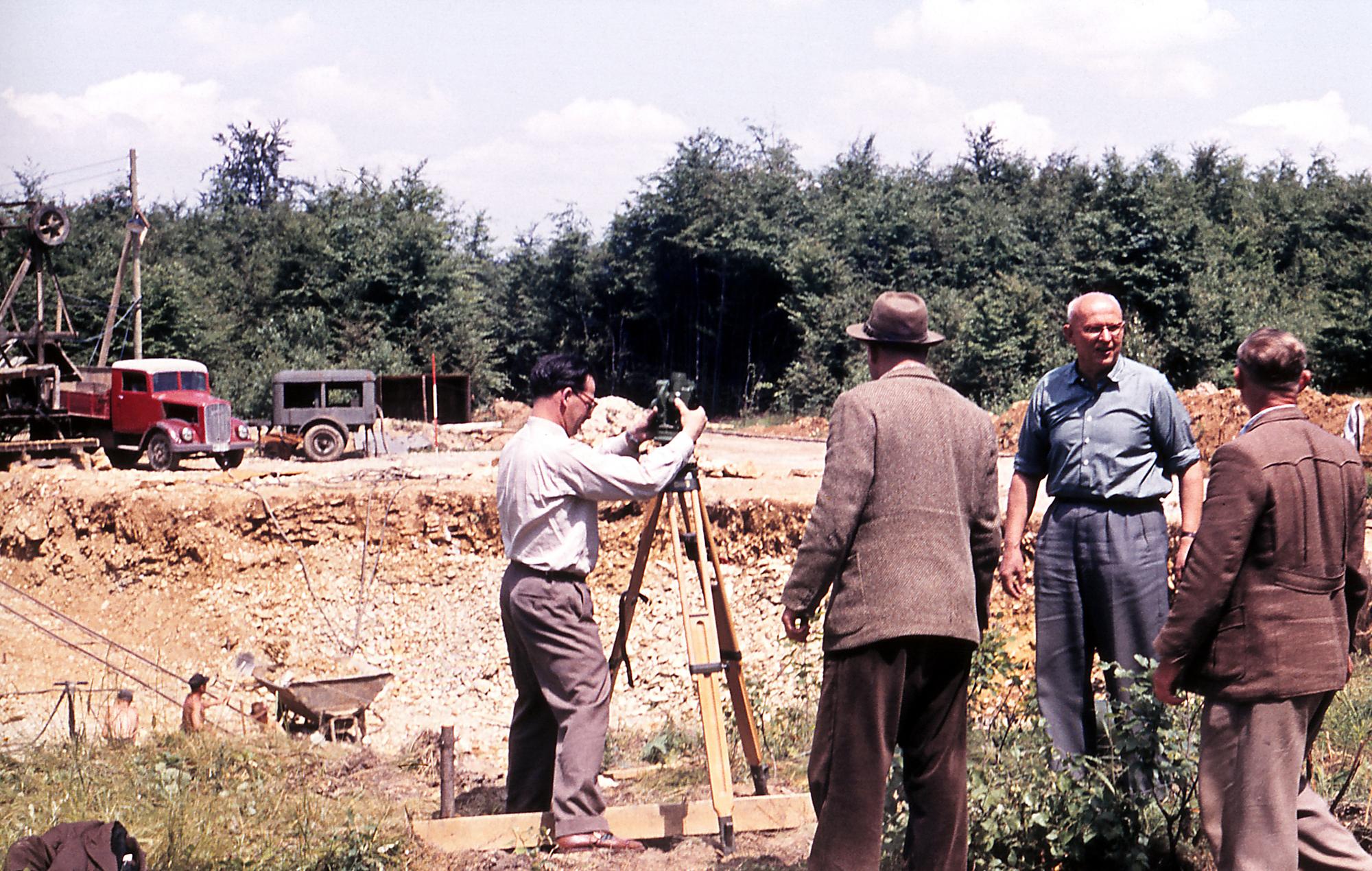 Foto: TLS
Foto: TLS
While the two possible installation sites near Potsdam were previously favored, the proximity to the manufacturing company Carl Zeiss Jena is now proving to be the most important requirement: The 2-meter telescope project is an experiment with a large number of new problems and innovative solutions, and it is foreseeable that a long phase of intensive cooperation will have to follow.
The good reputation that the town of Tautenburg has long enjoyed as a summer resort probably played a major role in the decision to choose the site in the Tautenburg Forest near Jena. The decision to put the telescope there can be dated to the end of 1956.
June 1957
At the request of the Executive Board of the German Academy of Sciences, the Institute for Ground Dynamics and Earthquake Research in Jena carries out vibration measurements in the Tautenburg Forest. The results confirm the suitability of the proposed site. The development and construction work for the observatory begins.
April 1, 1960
Dr. Benjamin Richter is appointed director of the yet-to-be-founded Karl Schwarzschild Observatory (KSO) Tautenburg. He is in charge of setting up the 2-metre universal telescope and establishing the institute. Richter was appointed director of the Karl Schwarzschild Observatory in 1962 and became a professor in 1969.
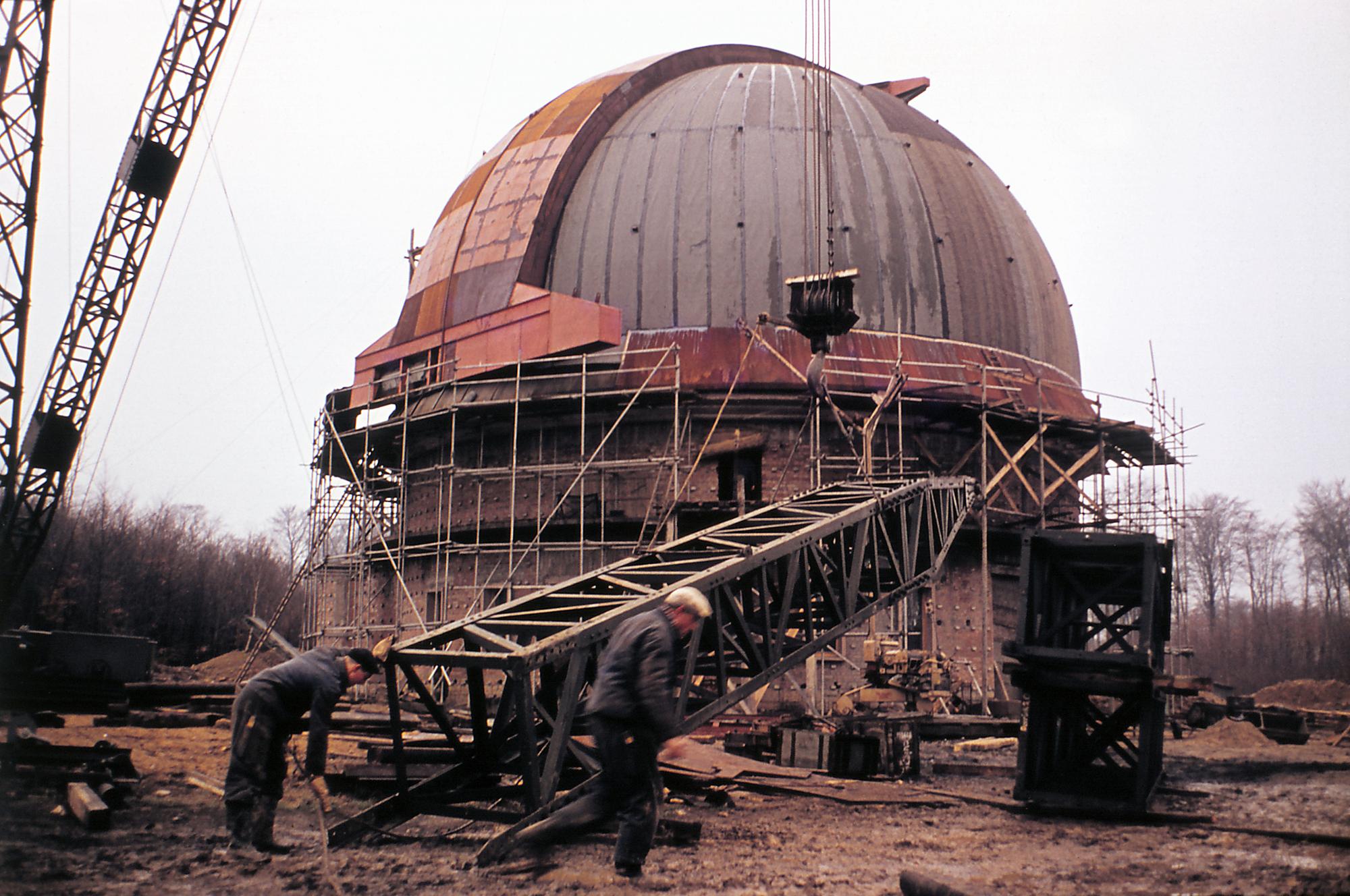 Foto: TLS
Foto: TLS
The Development of the Observatory in Tautenburg
October 1960
Carl Zeiss Jena hands over the 2-metre telescope to the German Academy of Sciences during a ceremony on October 19, 1960. At this time, the Tautenburg telescope is the fifth largest telescope in the world, the four larger ones being located in the USA. It remained the largest optical telescope in Germany for more than half a century. In 2012, it was rivaled by a telescope of roughly the same size, built by the Ludwig-Maximilians-University Munich on the Wendelstein mountain in Bavaria.
The handover of the telescope is accompanied by the founding of an observatory. The directorate suggested to name it Karl Schwarzschild Observatory (KSO). Karl Schwarzschild (1873-1916) was one of the most important German astrophysicists at the beginning of the 20th century. The directorate is transformed into a Board of Trustees.
Originally, the observatory was not founded as a research institute with an independent research profile, but as a service institute to support external astronomers in observing with the telescope. At the time of its foundation, there were no scientific staff other than the director. KSO was gradually equipped with instruments, laboratories, measuring rooms, and more staff.
November 16, 1960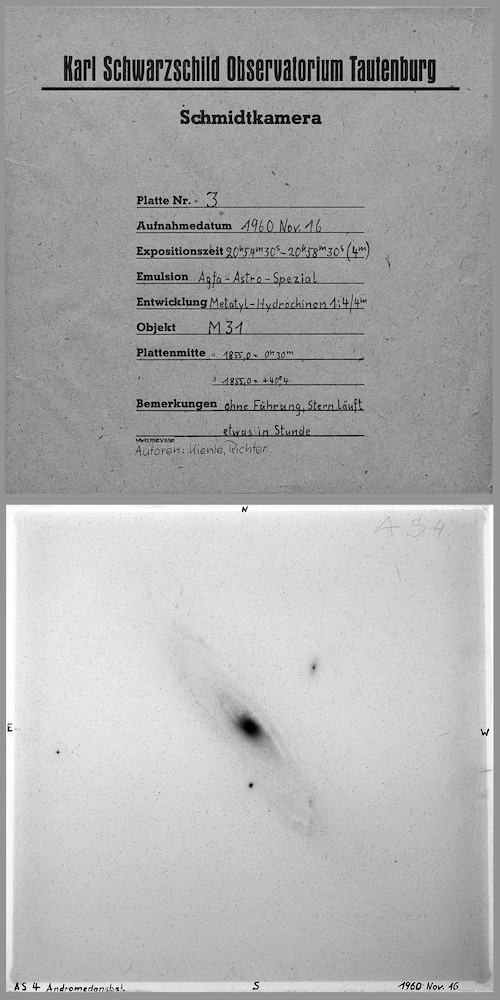 Fotoplatte mit Aufnahme des Andromeda-Nebels
Fotoplatte mit Aufnahme des Andromeda-Nebels
The 2-meter telescope receives its “First Light” in its operating mode as a Schmidt telescope.
As was common in astronomy at the time, photographic plates were used as recording medium. These are supplied by the Agfa Wolfen film factory (ORWO from 1964) in the special formats required by the Karl Schwarzschild Observatory. In addition to the normal correcting lens of the Schmidt camera, there was a prismatic ground correcting lens for slitless spectroscopy of very low resolution, but it was rarely used.
1962
At the time of its inauguration, the 2-meter telescope was still in the test phase. It is finally released for international research in mid-1962. There is lively international interest in the new, world's largest Schmidt telescope. It is frequently used by international guests, but only by very few astronomers from the Federal Republic of Germany. In particular, a long-lasting cooperation develops with the Bjurakan and later Selentschuk (6-meter telescope) observatories in the USSR.
1964
Agreement between Karl Schwarzschild Observatory and Carl Zeiss Jena on “Mutual assistance and information in the development and testing of large astronomical devices and their auxiliary equipment”.
The Tautenburg telescope is the first in a series of five 2-meter telescopes to be manufactured by Carl Zeiss Jena.
1965
At the end of 1965, the scientific staff of KSO consisted of the director, two scientific assistants for the observations and a scientific-technical assistant (Photomeister) for the work with the photographic plates. The first major scientific projects are detailed studies of the Andromeda Nebula and one of the first large optical quasar surveys. Photographic equidensitometry is introduced into astronomical isophotometry by the photomeister Wolfgang Högner and developed to a high level, making the KSO a world leader in this field.
The board of trustees that supported the Karl Schwarzschild Observatory when it was founded, consisting of Paul Görlich (Jena, East Germany), Hans Haffner (Hamburg, West Germany), Otto Heckmann (Hamburg, West Germany), Cuno Hoffmeister (Sonneberg, East Germany), Hans Kienle (Heidelberg, West Germany), Hermann Lambrecht (Jena, East Germany), Nikolaus Richter (Tautenburg, East Germany), Peter Wellmann (Munich, West Germany) and Johann Wempe (Potsdam, East Germany), continued to meet regularly until 1965. Afterwards its traces disappeared.
1968
The high-resolution spectrograph for the Coudé focus is supplied by Carl Zeiss Jena. It supplies the second important use of the 2-meter telescope. The Coudé focus is used during bright nights around the full moon, primarily for spectroscopic observation of magnetic stars. The dark nights around the new moon are intended for the Schmidt variant. The Nasmyth focus is used for tests for low-resolution spectroscopy and photoelectric photometry.
1969
Karl Schwarzschild Observatory becomes a part of the Central Institute for Astrophysics (ZIAP) in Potsdam, which was founded that year. The ZIAP is part of the Academy of Sciences of the GDR and comprises the Potsdam Astrophysical Observatory, the Babelsberg Observatory and - as external institutes - the Tautenburg and Sonneberg Observatories. From this point on, the observation programs are determined by the ZIAP.
1975
Dr. Siegfried Marx (1934-1995) becomes the new head of the KSO and is appointed Honorary Professor of Astronomy at the Friedrich Schiller University Jena in 1984. He would later lead the institute confidently through the turbulence of the reunification and post-reunification periods.
1978
Experiment to prove the brightening of the sky in Tautenburg by the city light of Jena. To protect the dark night sky in Tautenburg, a regional protection ordinance is issued that includes the city of Jena.
1981/1982
Dr. Freimut Börngen (1930-2021) begins the systematic search for minor planets on images taken with the Tautenburg Schmidt camera. The minor planet 2424 was given the name “Tautenburg” in 1983 at the suggestion of its discoverers. After systematically expanding the search method, Börngen later became one of the most successful international discoverers of minor planets.
1985/1986
Carl Zeiss Jena replaces the original spherical primary mirror, which consists of a special glass, with a mirror made of the glass-ceramic material Sitall. It is more resistant to thermal deformation than the glass of the first mirror.
The Karl Schwarzschild Observatory successfully participates in the worldwide campaign to observe Halley's Comet.
1987
The “Astrophotography” meeting of the International Astronomical Union (IAU), organized by Karl Schwarzschild Observatory, takes place in Jena.
1990 und 1991
After the reunification of the Federal Republic of Germany and the German Democratic Republic, Karl Schwarzschild Observatory was scientifically evaluated (just like all institutions of the Academy of Sciences of the GDR) and dissolved. However, as a result of the evaluation, the Science Council recommended the continuation of the Tautenburg Observatory. On November 5, 1991, the state government of the Free State of Thuringia announced the decision to establish the State Observatory in Tautenburg.
The Thuringian State Observatory
January 1, 1992
The Free State of Thuringia founds the Thuringian State Observatory “Karl Schwarzschild” Tautenburg (TLS) and finances it. In the following years, the institute is reorganized. The reestablishment of the institute also offers the first opportunity to develop an independent research profile.
The first major instrument projects at the new TLS are the development of a multi-object spectrograph (TAUMOK) for the Schmidt variant of the 2-metre telescope in close cooperation with the Max Planck Institute for Astronomy in Heidelberg, and the development of a high-precision scanner for digitizing the large-format photographic plates from the Tautenburg Schmidt camera. A new type of quasar survey is started using the digitized photographic plates.
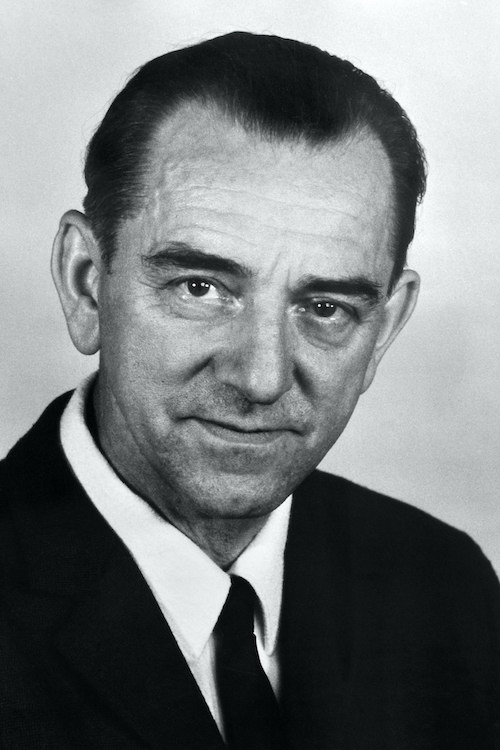 Alfred Jensch Chefkonstrukteur des 2-Meter-Teleskops in Tautenburg, Foto: TLS1992
Alfred Jensch Chefkonstrukteur des 2-Meter-Teleskops in Tautenburg, Foto: TLS1992
The 2-meter telescope at TLS is named “Alfred Jensch Telescope” to honor the overall achievements of Alfred Jensch (1912-2001) for astronomical instrument technology on the occasion of his 80th birthday. Jensch played a major role in the technical design of the 2-meter universal telescope.
1994
Dr. Josef Solf (1934-2024) is appointed Director of the Thuringian State Observatory and Professor of Astronomy at the Friedrich Schiller University in Jena.
1994 bis 1999
Under the management of Josef Solf, the Alfred Jensch Telescope, its instruments and the entire institute are extensively modernized and expanded. A new research building is constructed, creating space for urgently needed offices.
Measures to modernize the 2-metre telescope include, for example:
- Renewal of the drives so that a digital positioning of the telescope is possible
- Conversion of the high-resolution Coudé spectrograph into a Coudé echelle spectrograph with a wavelength coverage that is many times greater
- Development of a grism spectrograph for low-resolution spectroscopy of faint objects in the Nasmyth focus of the telescope
- CCD image sensors for all three telescope variants.
The Thuringian State Observatory's extensive collection of historical photographic plates is archived in air-conditioned rooms. The construction of the Tautenburg Plate Scanner makes it possible to digitize the almost 9,000 glass photographic plates taken with the Schmidt telescope over the course of more than three decades.
1999 bis 2000
Dr. Helmut Meusinger (honorary professor at the University of Leipzig since 2008) manages TLS on an interim basis until the designated director takes office.
The CCD camera for the Schmidt version of the telescope gets a new CCD image sensor with an approximately four times larger field of view.
2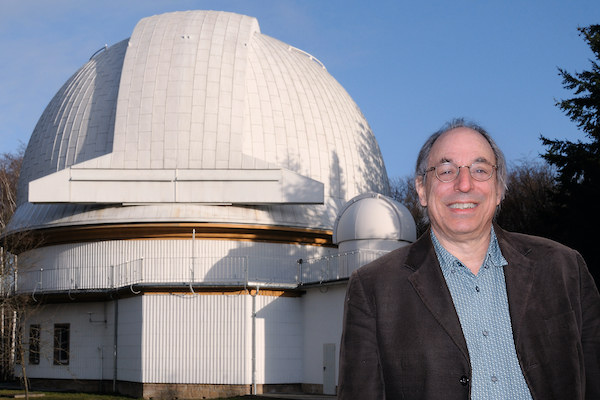 Artie Hatzes, Direktor der TLS von 2000 bis 2023. Foto: TLS000
Artie Hatzes, Direktor der TLS von 2000 bis 2023. Foto: TLS000
Dr. Artie Hatzes becomes Director of the Thuringian State Observatory and Professor of Astronomy at Friedrich Schiller University Jena. Under his leadership, the Thuringian State Observatory expands its research areas and becomes a pioneer in the search for extrasolar planets.
International research collaboration is expanded with a number of projects, including:
- SOFIA, the Stratospheric Observatory for Infrared Astronomy, was a Boeing 747SP aircraft modified to carry a 2.7-meter (106-inch) reflecting telescope (with an effective diameter of 2.5 meters or 100 inches)
- CARMENES: TLS is part of the CARMENES consortium that built the CARMENES instrument for the 3.5-meter telescope at the Calar Alto observatory in Spain
- CRIRES+: TLS is part of the CRIRES+ consortium that built the CRIRES+ high-resolution spectrograph for ESO's Very Large Telescope
- PLATOSpec: TLS is part of the PLATOSpec consortium that modernized the 1.52-Meter telescope at ESO's La Silla Observatory in Chile and equipped it with a high-resolution spectrograph. Being part of this consortium provides TLS with its own (shared) observation facility in the Southern hemisphere, starting in 2025.
2005
The TLS starts operating the 30-centimeter telescope TES (Tautenburg Exoplanet Search Telescope). It automatically searches the sky for transit events in order to detect extrasolar planets using the transit method.
A collaboration agreement is signed with the Faculty for Physics at the University Leipzig. TLS staff teaches astronomy at the University Leipzig.
2006 to 2013
The TLS participated in the CoRoT (Convection, Rotation & Planetary Transits) satellite mission. One of the mission's goals was to find planets around stars other than the sun using the transit method. The CoRoT satellite telescope was a project of the French space agency Centre National d'Études Spatiales (CNES).
2010
The Tautenburg station of the European LOFAR (Low Frequency Array) radio telescope is ready to receive radio signals. The innovative radio telescope operates in the previously largely unexplored frequency range between around 10 MHz and 240 MHz. The station in Tautenburg is the second international station outside the Netherlands. The first radio sky image with the Tautenburg LOFAR station was taken in April 2009.
Research at TLS now focuses on the areas of 1) stars and their planets and 2) extragalactic astrophysics. The former mainly includes extrasolar planets, young stars and magnetic stars. The latter concerns large-scale cosmic structures, active galactic nuclei and explosive high-energy phenomena in galaxies (gamma-ray bursts). Scientists at TLS successfully acquire observing time at large international observatories for their various research projects.
TLS starts to participate in a long-term international observation campaign to improve the orbit determination of near-Earth objects (NEOs). It is coordinated by the Minor Planet Center (Cambridge, USA) on behalf of the International Astronomical Union (IAU).
For its 50th anniversary, TLS organizes an international meeting under the title "Big Science with Small Telescopes".
2013
The digitization of the majority of the photographic plates taken with the Tautenburg Schmidt camera is completed. The digital data is stored at TLS and made available to interested parties on request. In 2018, they are added to the APPLAUSE database created at the Astrophysical Institute Potsdam (AIP), making them more easily available for further processing.
2018
The new TAUKAM CCD camera for the Schmidt version of the 2-meter Alfred Jensch telescope is completed at TLS. A new CCD image sensor with a field of view of 1.7 square degrees is used, which enables both improved resolution and more effective utilization of observation time. The new camera is primarily used for observing Near Earth Objects.
2020
The Thuringian State Observatory is 60 years old. The LOFAR station at the TLS celebrates its 10th birthday.
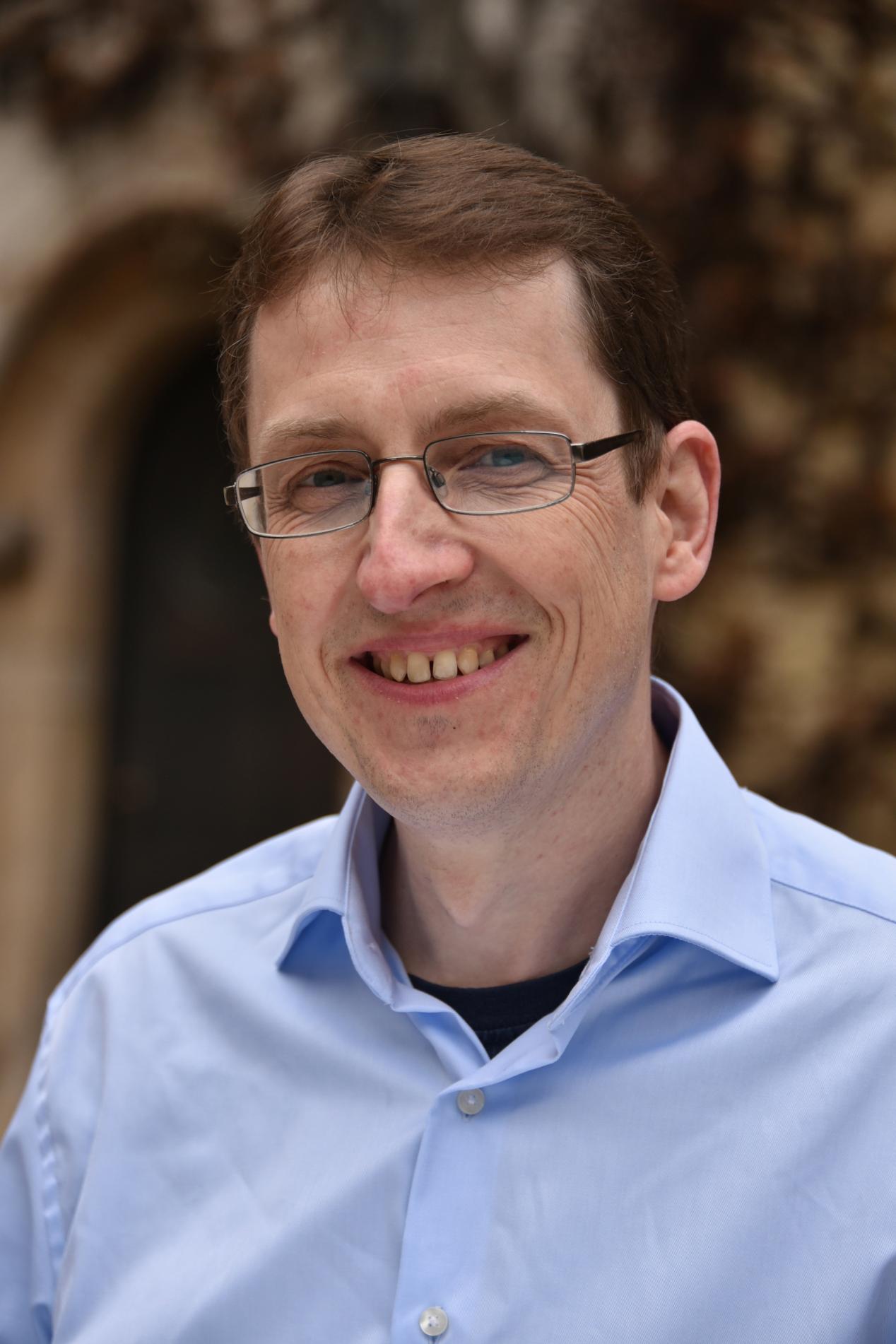 Markus Roth, Direktor der Thüringer Landessternwarte Foto: FSU/Annegret Guenther2023
Markus Roth, Direktor der Thüringer Landessternwarte Foto: FSU/Annegret Guenther2023
Dr. Markus Roth becomes Director of the Thuringian State Observatory and Professor at the Friedrich Schiller University Jena. Under his leadership, the Thuringian State Observatory is expanding its research focus: New additions include research into the sun and the interior of stars (helio- and asteroseismology). The long-term goals are to better understand the magnetic activity of the sun and stars and to make the magnetic activity of the sun predictable.
2024
The Tautenburg Solar Laboratory (TauSoL) is put into operation on the premises of the Thuringian State Observatory. TauSoL is to be developed into a prototype for a fully automated solar observatory and form the basis for a global network of six similar solar observation stations. In future, this network is supposed to be able to continuously monitor the sun without daily or weather-related interruptions and obtain more high-quality data with higher temporal, spatial and spectral resolution.
TauSoL will be used to develop optical instruments that do not yet exist for solar observation and, in particular, for investigating seismological processes inside the sun and stars. For example, a spectropolarimeter based on a Fabry-Perot interferometer with a diameter of 15 centimetres is currently under development. In future, the instrument will continuously measure the speed of the plasma and the changing magnetic field on the sun.
2025
PLATOSpec, a high-resolution spectrograph at the 1.52 meter telescope at ESO's La Silla Observatory is ready for observing stars. Observations at the modernized telescope can be done remotely from Tautenburg, giving astronomers at TLS an observing facility for stars that can only be seen in the Southern Hemisphere.
Bilder aus der Vergangenheit


